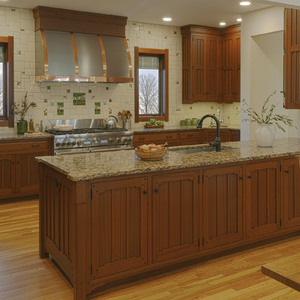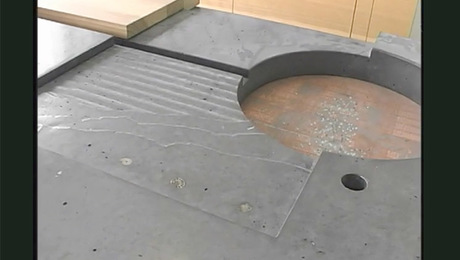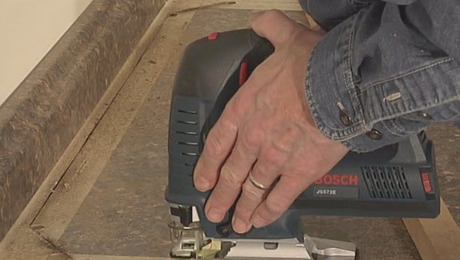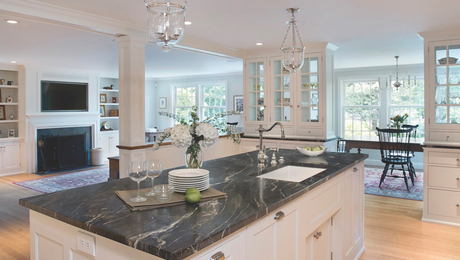Q:
I’m building an L-shaped countertop in my kitchen, and I want to know how to make a diagonal cut in the plastic laminate for a good corner seam.
Joe Carlucci, Naples, FL
A:
Herrick Kimball, a carpenter in Moravia, New York, replies: The kind of countertop you’re making, which I refer to as custom square edge, doesn’t require a mitered corner seam. In fact, one of the reasons why I recommend a custom square edge to my customers is so that they can have a seamless corner. I think a seamless corner looks better. With that thought in mind, I suggest you consider an alternative.
Plastic-laminate sheets come as large as 144 in. by 60 in., so you might be able to cover your countertop with one single sheet. Even if you end up with a lot of waste, at least you’ve avoided the seam and the trouble of making it.
If you must make a seam, then it’s best to put the seam through a sink or cooktop, where only a couple of inches will show. Don’t worry about water in these areas; moisture won’t bother a tight, well-glued seam. If there’s no sink or cooktop on your countertop, put the seam out of the main work and view areas. Seams aren’t nearly as perceptible when viewed across the joint, as opposed to straight down.
You can make a perfectly tight seam by mirror cutting the edges. Mirror cutting is done by first abutting the pieces to be seamed over a scrap of plywood and clamping them down firmly so that they won’t shift. Then clamp a straightedge parallel to the seam and positioned so that a router with a 1/4-in. straight bit slices directly down the joint. Make the cut through the laminate and slightly into the plywood with one smooth swipe, and you’ll get two precisely matched edges.
You should make the seam with oversize laminate pieces; trim all the edges after gluing the laminate to a prefitted substrate and then install the countertop. If your countertop substrate is already in place, and you absolutely must have that mitered corner seam (a creative challenge if there ever was one), it can be done by first making an exact pattern of the substrate using paper or cardboard.
Once you have a pattern, tape it down on two versize, premitered (and mirror-cut) pieces of laminate. A large carpeted section of floor is a good work area. If the mitered sections are tight, the pattern is good, and you carefully trace and cut the outline (allowing extra overhang on countertop front edges for edge trimming after glue down), the pieces will fit in place very nicely indeed. (For more on the topic, see my article Making Plastic-Laminate Countertops.)

























